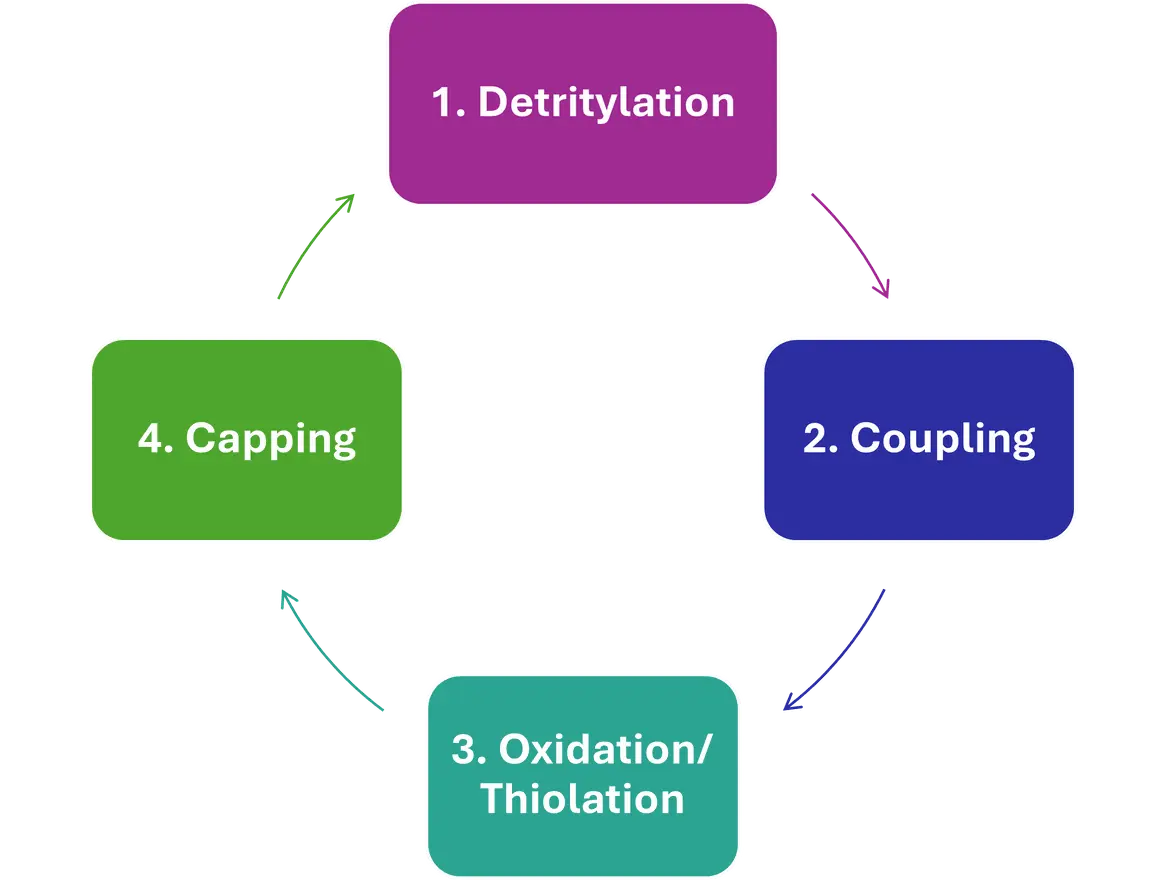The Hitchhiker´s Guide to Creating Oligonucleotides from Start to Finish
Back in 2020 we came up with an innovative system for making lipid nanoparticles (LNP), and it's completely changed things here at KNAUER. The Impingement Jets Mixing (IJM) technology was developed to produce mRNA-based coronavirus vaccines. This was not the first time we had encountered the fascinating world of DNA and RNA, but it certainly resulted in our decision to dig deeper into this field. While the mRNA-based coronavirus vaccines were the first molecules encapsulated by our system, the technology can be used for any oligonucleotides, – short strands of DNA or RNA. And that's when we got really fascinated by the purification and quality control of these stunning molecules, too!
Helping make oligonucleotide manufacturing simpler and smarter – that’s a key focus for KNAUER now and in the near future.
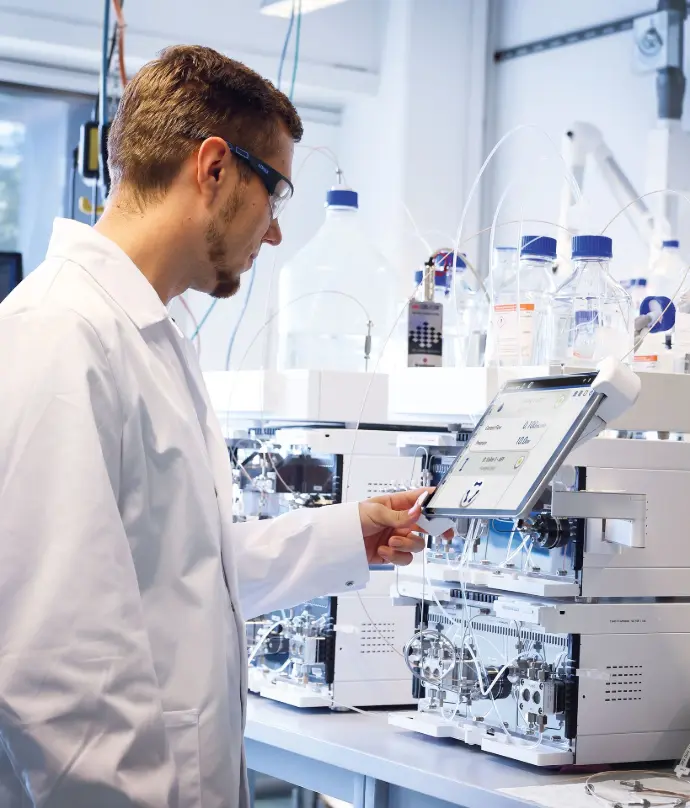
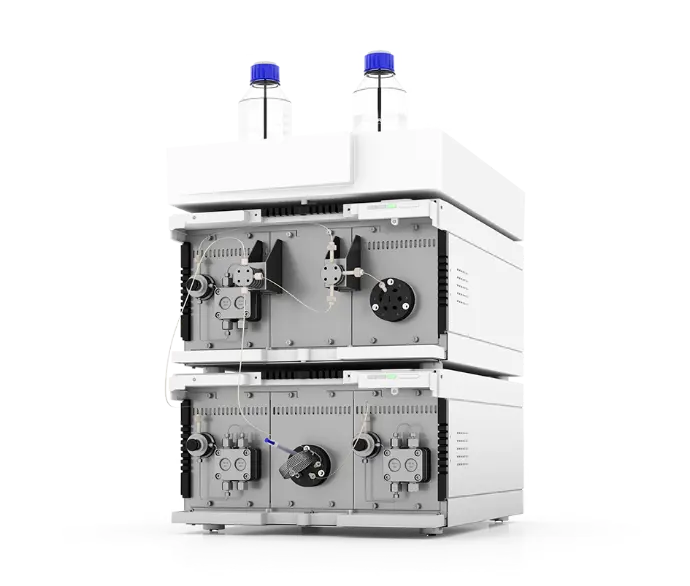
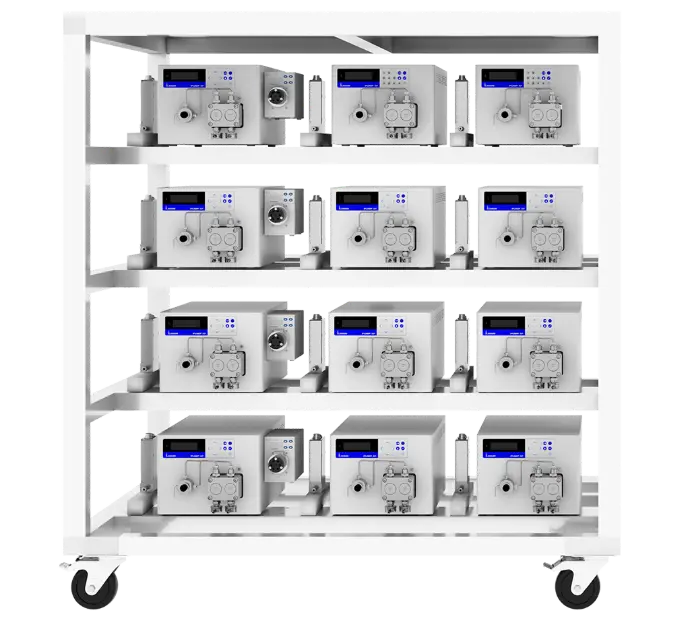
Systems for LNP production. Middle: NanoScaler, Right: Customized NanoProducer
What Does it Take to Produce Oligonucleotides?
Whether you're a CDMO or simply aiming to meet your own demand, setting up your own lab for oligonucleotide production involves several key steps. This first blog provides an overview of the workflow required to produce oligonucleotides on a mid-scale level (from 1 µmol to several hundred mmol). We’ll briefly touch on each step in the process and return to them in more detail in upcoming posts, so you can understand each unit operation and begin producing oligos in your own lab. The first blogs will explain different methods for quality control and purification. Before we clean and check, we need to create—so let’s start with how oligonucleotides are born.

Typical workflow for oligonucleotide production
Step 1: Solid-phase synthesis
First, the process begins with synthesizing the oligonucleotide itself. Here, each nucleobase is added one after the other to a solid-phase support, typically controlled pore glass (CPG) or polystyrene (PS). For each base addition, four primary reactions happen:
- Detritylation – Removal of protecting groups
- Coupling – Addition of the next nucleobase
- Oxidation/Thiolation – Stabilization of the phosphate backbone
- Capping – Inacctivation of any uncoupled strands
Solid-phase synthesis
These steps involve reagent contact, mixing, washing, and activation, and are usually automated using dedicated synthesizers. KNAUER's oligonucleotide synthesizer is in the pipeline.
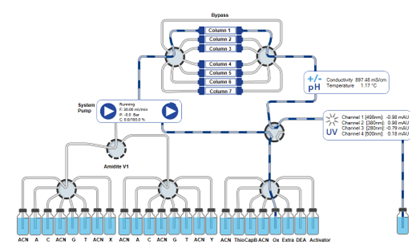
Flow scheme KNAUER Synthesizer
Step 2: Deprotection
Following synthesis, the crude oligonucleotide must be cleaved from the solid support. Ammonia is commonly used to release the oligo. Additional treatment with ammonium hydroxide at elevated temperatures removes remaining protecting groups. After filtration to remove the solid support, the oligo solution is neutralized and is then ready for initial analysis.
Step 3: Purification & Analysis by Chromatography
Here is a quick summary of the ways you can use chromatography to analyze and purify oligonucleotides.
- Anion-Exchange Chromatography (AEX): Separates by charge; cost-effective but results in high salt concentrations requiring further processing.
- Ion-Pair Reversed-Phase Chromatography (IP-RP): is used for its resolving power; more costly but often achieves higher purity and easier downstream handling due to volatile buffers.
- Hydrophilic Interaction Liquid Chromatography (HILIC): is gaining traction as a powerful alternative for oligonucleotide analysis. Unlike traditional reversed-phase methods, HILIC thrives on polarity. It’s a great fit for separating short and modified oligos without the hassle of ion-pairing—though its strength lies more in analysis than in scaling up.
Step 3a: In-Process Analytics and Quality Control
So, while the oligos are produced, we need to make sure they reach a certain purity. We also need to check their sequence integrity and structural modifications. This is where KNAUER's core business really shines. Liquid chromatography is the go-to method for these analytical tasks. Typical methods used during these steps are IP-RP, AEX or HILIC. Take a look at our next posts to find out more.
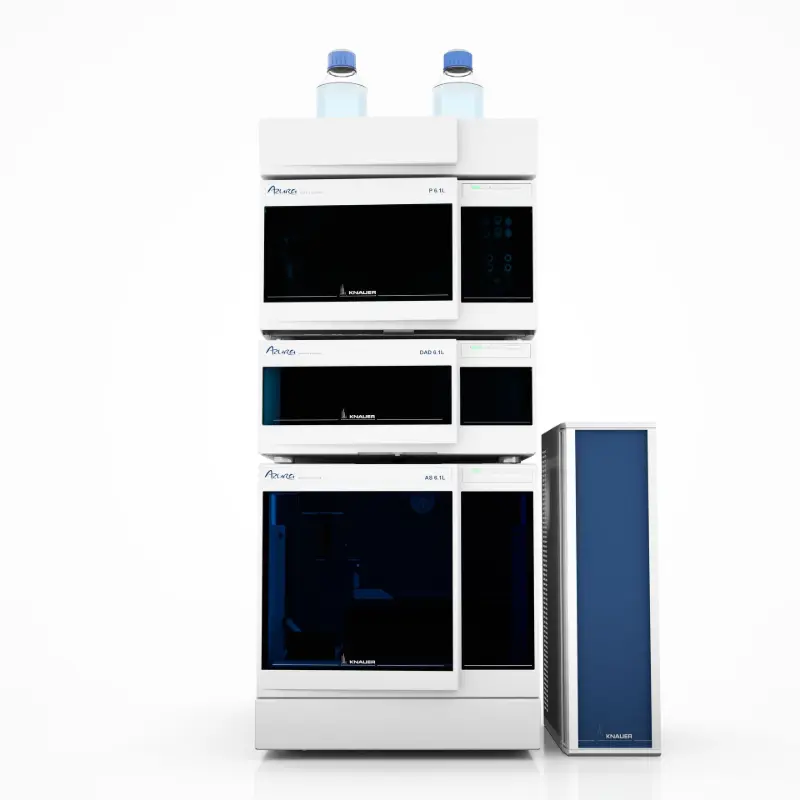
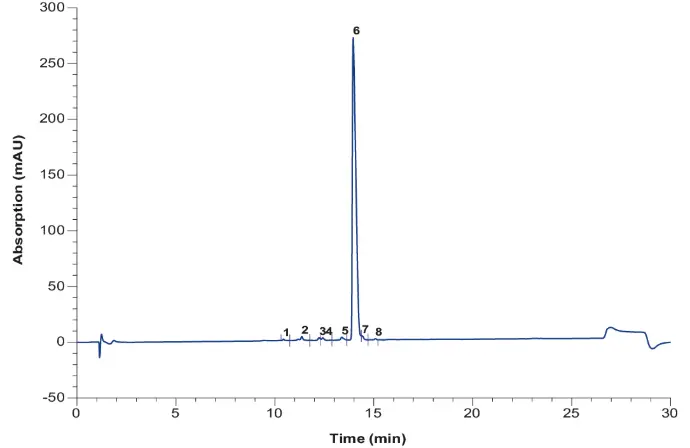
Representative KNAUER analytical HPLC system and Chromatogram of Oligonucleotide Analysis
Step 3b: Purification by Chromatography
Now we have a basic understanding of the crude product’s purity. Purification becomes the next task. Common impurities include truncated sequences, residual protecting groups, and other synthesis by-products. There are two common ways to do this: AEX or IP-RP
Process chemists often test both modes at small scale to choose the optimal method. Either method can be run on the same instrumentation – like KNAUER’s AZURA® Lab or Pilot Prep HPLC system.
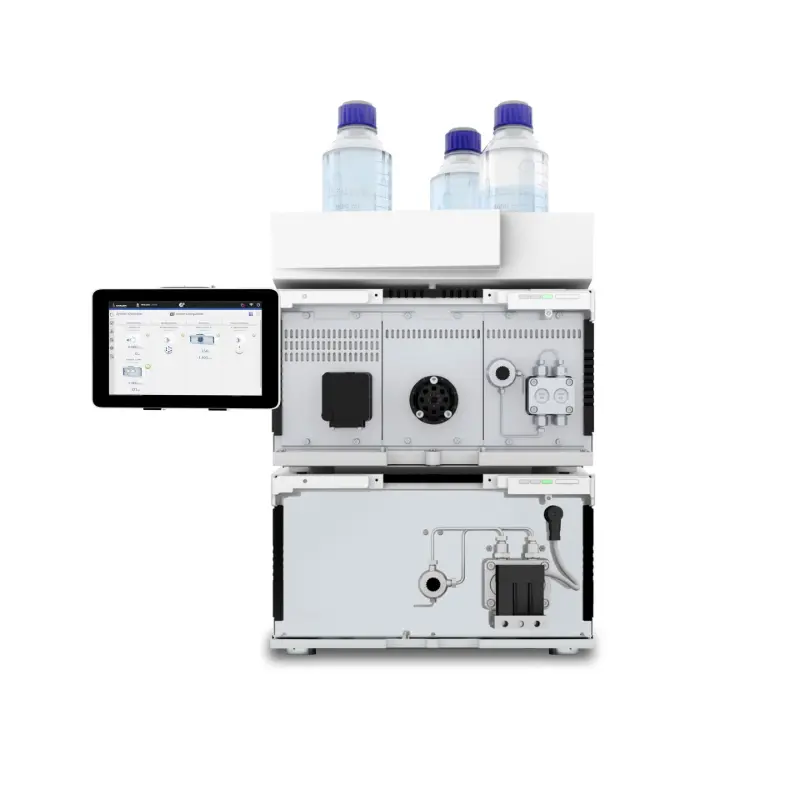

Representative KNAUER preparative LC System and Chromatogram of Oligonucleotide Purification
Step 4: Desalting or Solvent Exchange via Tangential Flow Filtration (TFF)
Following purification, the oligo solution contains either salts (after ion exchange) or organic solvents (after reversed phase). With tangential flow filtration, you can gently exchange the matrix by replacing the existing medium with water or formulation buffer. A membrane with a small molecular weight cut-off allows salts or solvents to pass through, while retaining the larger oligonucleotide. This step is scalable, efficient, and key to preparing a clean solution for further processing. Just a heads-up: KNAUER is currently developing a modular TFF system for this purpose.
Step 5: Endotoxin Removal (TFF)
To ensure safety for parenteral use, therapeutic oligonucleotides must meet stringent endotoxin thresholds. These lipopolysaccharide contaminants, originating from bacterial cell walls, are typically removed at this scale through an additional tangential flow filtration (TFF) step. By using a membrane that retains high-molecular-weight endotoxin aggregates while allowing smaller oligos to pass, 3–5 diafiltration volumes can reduce endotoxin levels by several orders of magnitude. This purification step is critical for compliance with regulatory standards, though acceptable endotoxin limits depend on the intended dose and route of administration.
Step 6: Lyophilization
Lyophilization is the standard final step for preclinical batches. Freezing the solution below –40 °C and then applying vacuum to sublimate the ice yields a dry, porous cake. This form is stable at room temperature and reconstitutes quickly, making it ideal for distribution and long-term storage.

How KNAUER Technology Connects the Dots
KNAUER offers AZURA® (U)HPLC systems and columns like Sepapure® oliGO to support every analytical quality control checkpoint in the oligo production workflow. Our flexible AZURA® preparative LC platform is optimized for oligonucleotide purification. Our oligo synthesizer is in the final stretch, and a smart TFF solution is taking shape—built to streamline desalting and remove endotoxins effortlessly.
These technologies enable scientists to build efficient, scalable oligo production setups without relying on fragmented solutions from multiple vendors.
If you're planning to set up or optimize your oligonucleotide workflow, feel free to contact us at sales@knauer.net. If you want to get more detailed information about single steps stay tuned for our upcoming posts.
For more in-depth discussion or questions, reach out to the author at schaek@knauer.net
